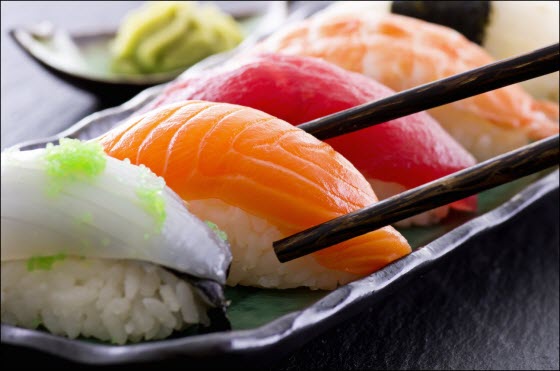How a Roll of Sushi Changed My View on Marketing
As a marketer, sushi really fascinates me.
I do enjoy a good sushi roll, but I am by no means a “sushi connoisseur.” However, the fact that I have met so many of them really intrigues me. How can so many people be so passionate about the rolling up of raw fish and rice?
I was recently visiting a friend, and he began to pontificate about the best local sushi restaurant, apparently rated one of the best in the world. He also claimed that I technically have never had sushi until I’d had it from this restaurant. He said I would “simply die” after just one bite (see irony). And I know my friend was not alone, for it took several weeks to get reservations for this restaurant.
Again, the sushi phenomenon fascinates me. Why would anyone wait weeks for sushi when they can just go to the local grocery store? Sushi and sushi, right?
Transforming sushi into “sushi”
After rolling his eyes several times, my friend began to explain to me why this sushi restaurant was like no other sushi restaurant “in the world.” First, he explained the process each sushi chef at this restaurant goes through in order to learn how to properly cook sushi. For instance, at the bare minimum, each chef spends three years just learning how to cook rice and cut fish.
Three years? Three years to learn how to cook rice? It takes me less than three minutes on average. Nevertheless, it is in these years of training that one goes from being able to cook sushi to being able to cook “sushi.”
As a marketer, it fascinates me how something as simple as rice and raw fish can become such a social phenomenon and ultimately a wildly successful business model.
This says volumes about the nature of the value proposition. Think about it for a moment. How many of us are working with products or offers seemingly so “common” that they could never have a viral impact? How many of those products are any more common than raw fish or rice?
In marketing, there are no commodities
What I have learned from sushi is that the force of a product’s value proposition does not just come from the “raw stuff” of the product itself.
An offer’s force often comes from the way the “raw stuff” is packaged, delivered and ultimately experienced. You could be selling the most common thing on the planet (like fish and rice), and yet put forward a forceful value proposition to offer the market.
As a marketer, there is no such thing as a commodity. Everything has the potential to have a compelling value proposition. Whether you’re selling gold, cell phone accessories or airfare, there is a way to do it that brings a uniquely forceful value to the market.
I have personally worked with groups in each of those categories to uncover their unique value proposition, and we did it. Like this sushi restaurant, we figured out a way to deliver a superior experience around something that would normally be taken as common.
This is our job as marketers — to help our organizations cultivate the “common things” into truly extraordinary experiences.
And anything less than that is just raw fish.
You might also like
MarketingSherpa Summit 2016 — At the Bellagio in Las Vegas, February 22-24
3 Lessons From Shia LaBeouf on How to Go Viral
Social Media Marketing: When your product delights your customers, customers will help sell it
Categories: Marketing content, customer-centric, Value Proposition











Such an informative blog post. You can’t just sell a product, you need to sell a service, an experience. You need to make it all about the customer and their enjoyment/fulfillment. Thank you, Austin!